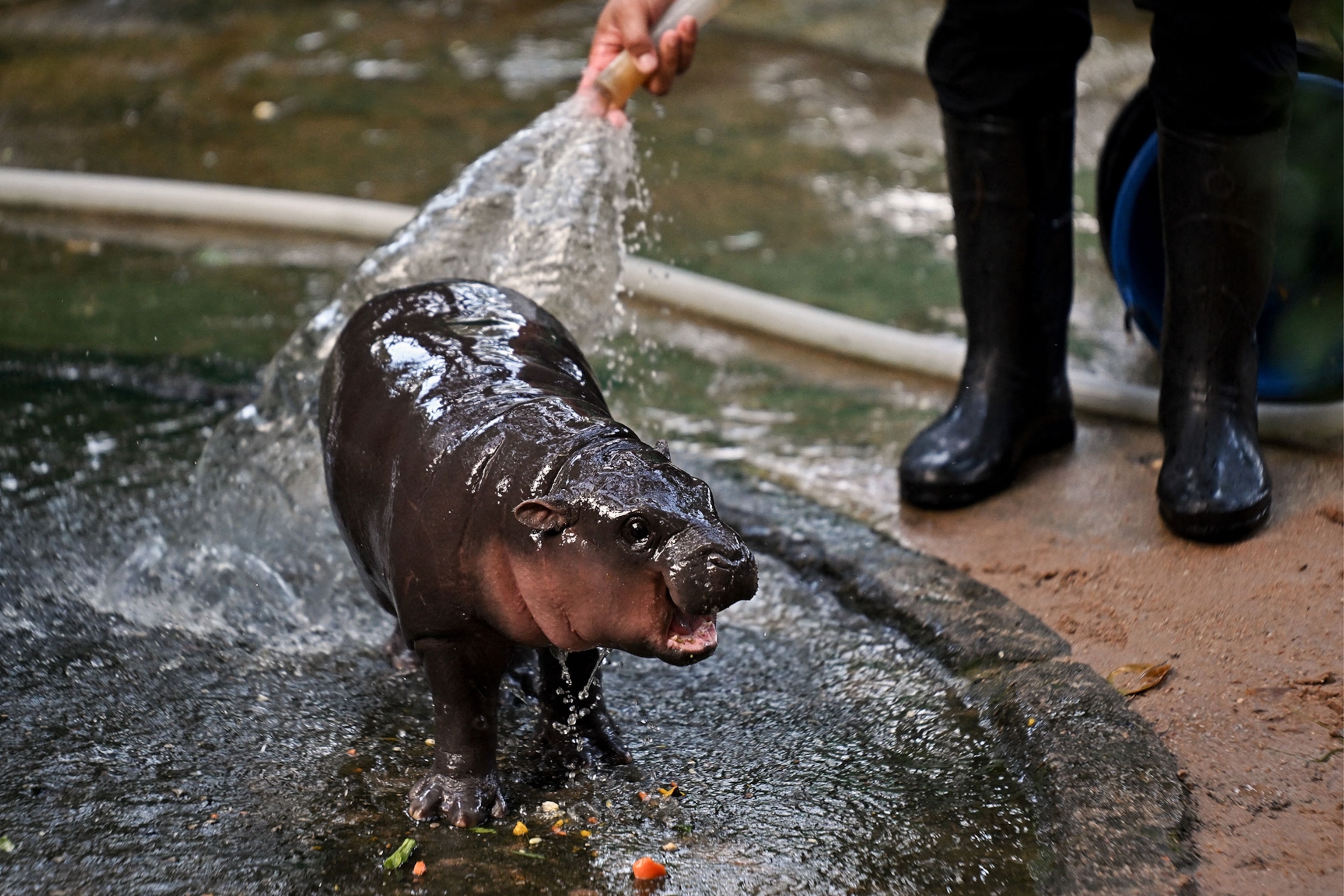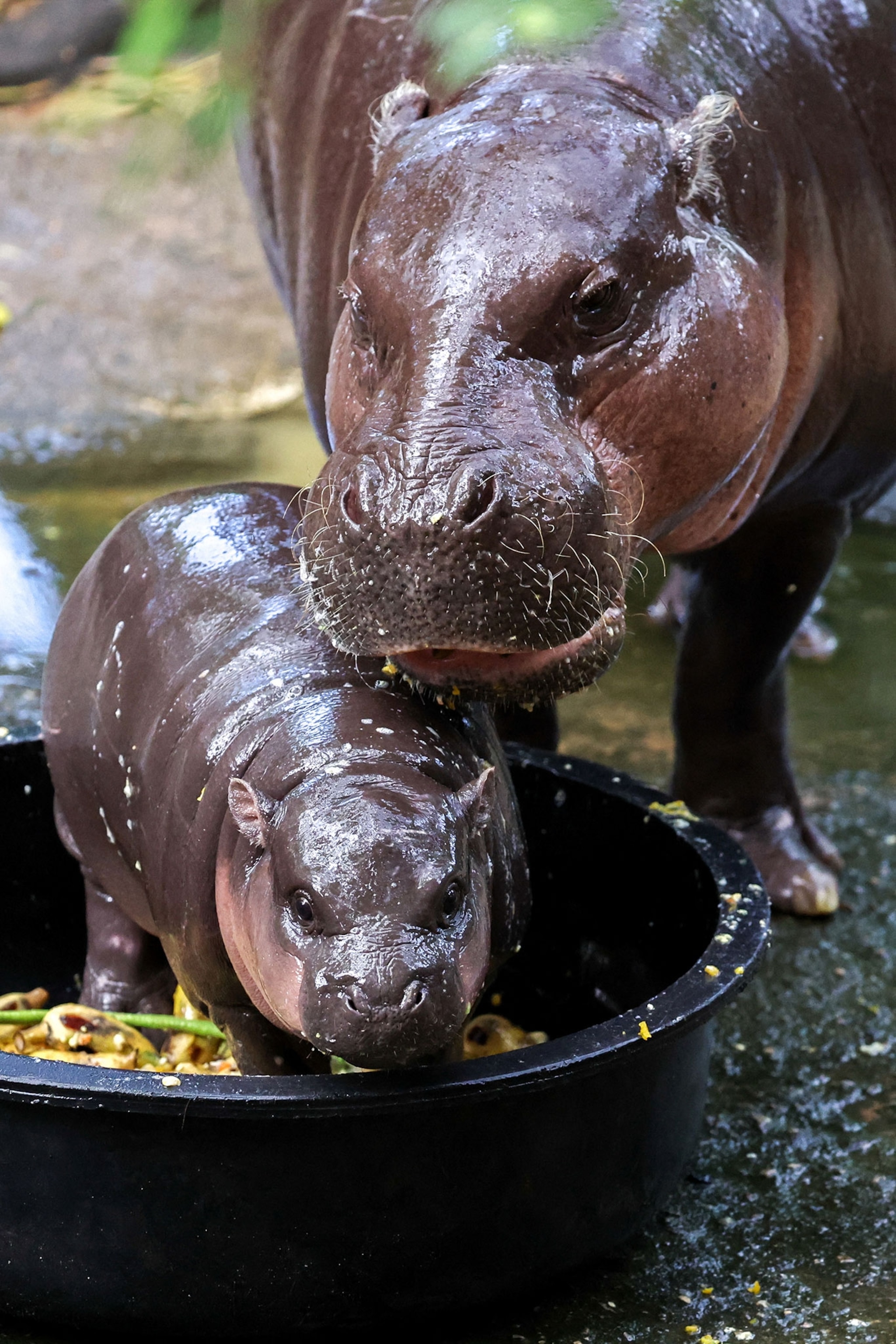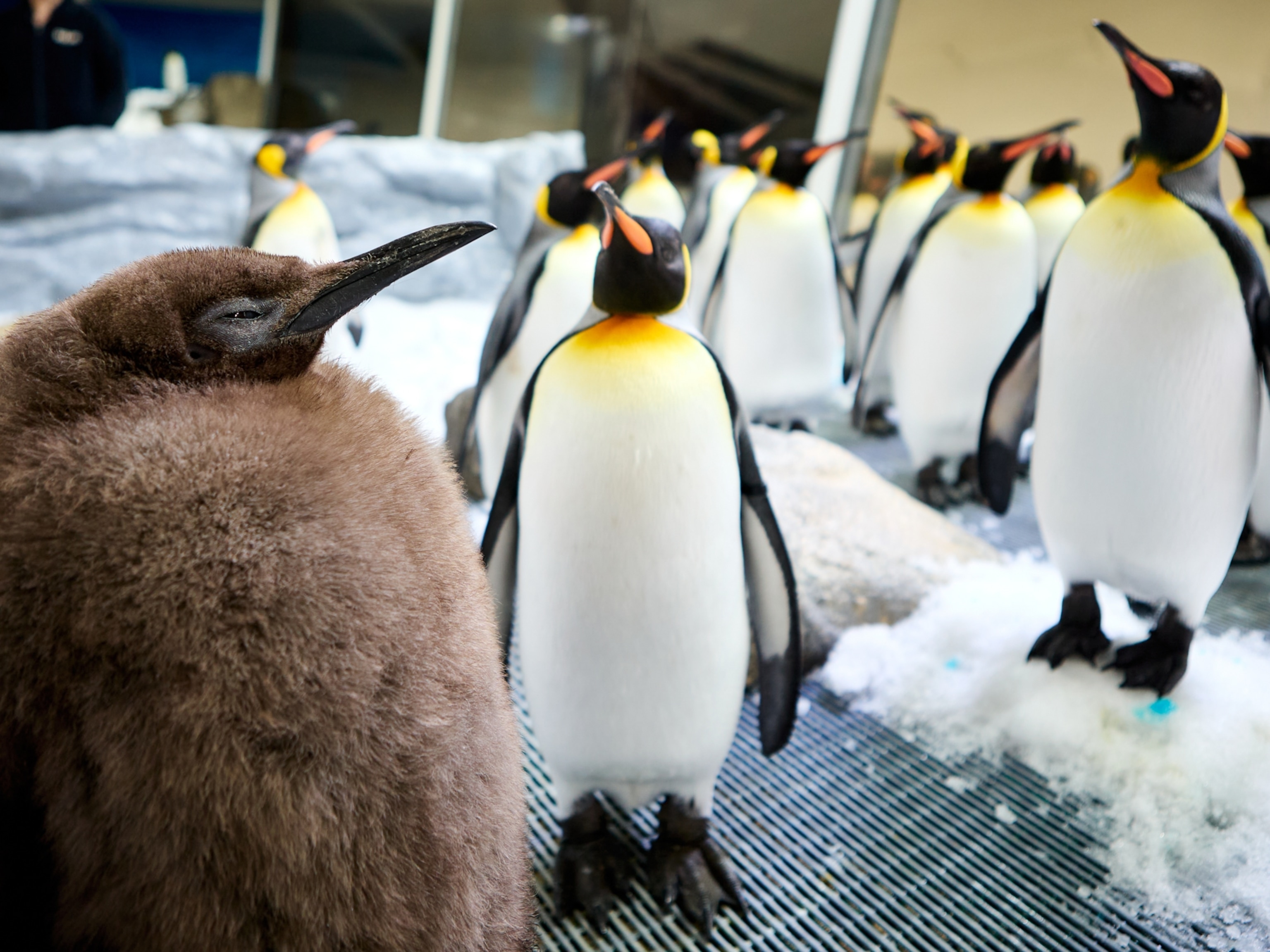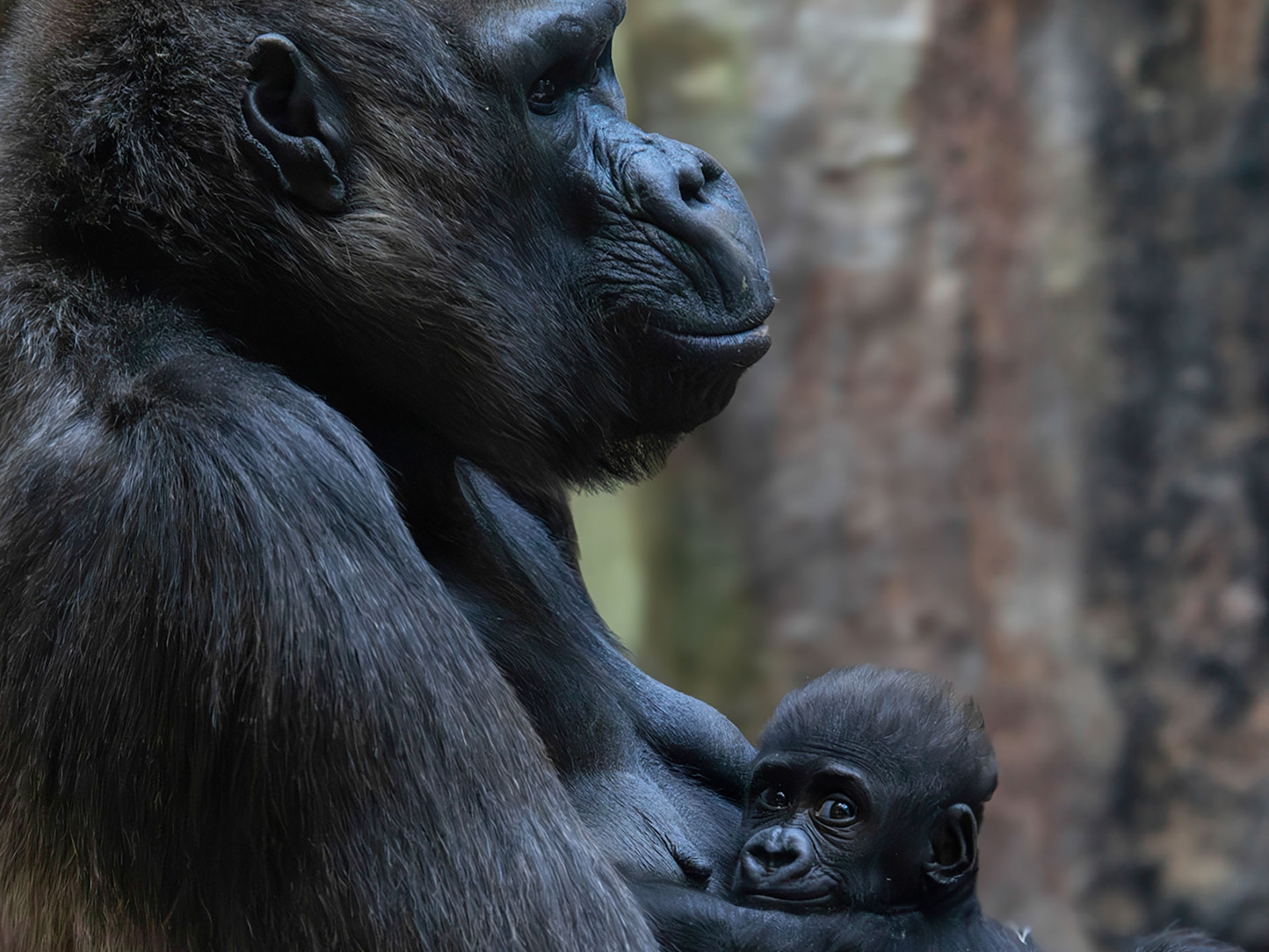
How Moo Deng the pygmy hippo is different from common hippos
With Moo Deng's adorable behavior and panicked expressions going viral, experts weigh in on this lesser-known hippo species evolved from its much larger cousins.
Moo Deng—a squishy, shiny, purple-pink pygmy hippo born this summer at a zoo in Thailand, and whose name means “bouncing pig”—has taken the internet by storm.
And that might have folks wondering, what is a pygmy hippo, anyway?
The pygmy hippopotamus (Choeropsis liberiensis) is one of two living hippo species. The other is more well-known, which is reflected in its name, the common hippopotamus (Hippopotamus amphibius).
While these creatures have similar shapes and colors, put these hippo species side-by-side, and you’d quickly realize just how different they are.
“Size is the main difference,” says Karen Vacco, assistant mammal curator at the Pittsburgh Zoo and Aquarium, which also houses a pygmy hippo. “The pygmy hippo is 10 times smaller than a common hippo.”
As adults, pygmy hippos can weigh up to 600 pounds, which may sound like a lot, until you learn that their cousins, the common hippos, sometimes weigh up to 4.5 tons, which is 9,000 pounds.
Scientists have investigated exactly what sets these two species apart—even making some intriguing evolutionary discoveries.
Similarities and differences
The size of both hippos and pygmy hippos is rather impressive when you consider that each species is largely herbivorous. In the wild, pygmy hippos eat mainly grasses and aquatic plants, says Vacco. However, Moo Deng and other pygmy hippos that live in zoos eat mainly greens, vegetables, and what’s known as “herbivore biscuits,” which provide extra nutrients.

Geographic range is another big difference among the hippo species. Common hippos can be found across central and southern Africa, including a small sliver of territory that follows the Nile River north to the Mediterranean.
Meanwhile, pygmy hippos are native to the forests and swamps of West Africa, where they live mostly solitary lives—which Vacco says is another divergence from common hippos that live in herds of around 40 individuals or as many 200.
One thing both species have in common, and something you should watch out for when visiting them at the zoo or on safari? The splash zone.
“Hippos spray their feces like a sprinkler by wagging their tail back and forth,” says Vacco.
Evolution of the hippo family tree
Scientists were curious about how closely the related the species are, too, so in 2023, they decided to use molecular data to investigate the only two living members of the hippo family tree. And what they found was rather surprising.
“Our study found that they split around four million years ago, which is more recently than previously thought,” says Jan Janecka, a geneticist at Duquesne University.
(Do viral videos of pygmy hippos help or hurt the species?)
To put those figures into perspective, this means that pygmy hippos and common hippos diverged about one to two million years before humans and chimpanzees or lions and tigers, says Janecka. Or about the same amount of time ago as American black bears and brown bears.
While no one knows for sure, Janecka and his coauthors think that the hippo species may have gone down different evolutionary pathways as the pygmy hippos became smaller and more adapted to life on land.
In turn, common hippos may have been allowed to grow larger because they spend much of their lives in water, which helps supports their considerable heft.





